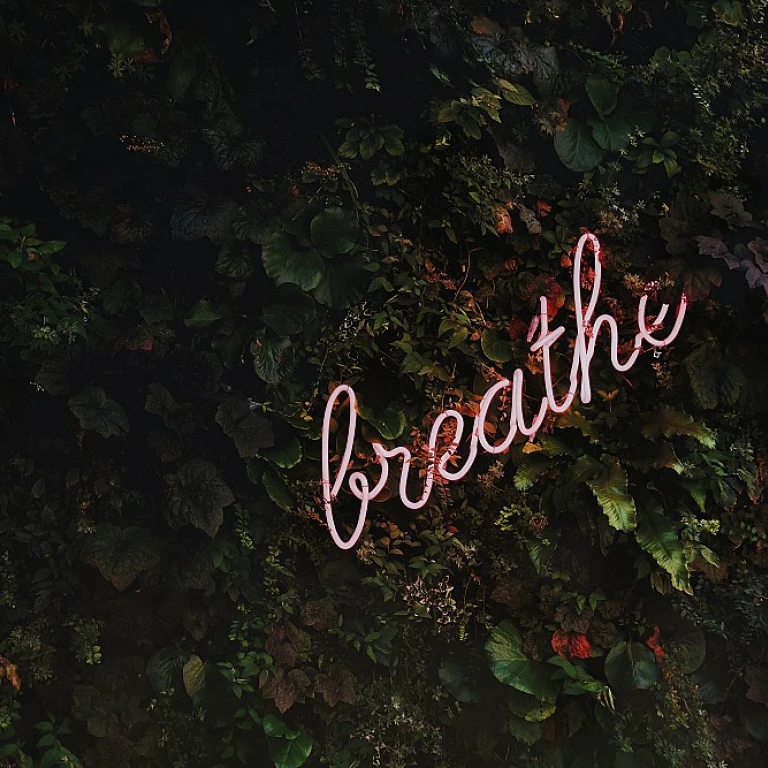
Understanding the Psychology of Colors
The Emotional Palette and Its Impact
Colors play a significant role in our daily lives, influencing emotions and behavior, deeply rooted in psychology. Certain hues can evoke strong feelings, impacting our mental state both positively and negatively. By utilizing color psychology, we can better understand how to create a sense of balance and well-being in various environments.
The color blue, for instance, is often associated with calmness and stability. It's used to support mental health by reducing stress and anxiety, while green is linked to harmony and renewal, fostering a sense of tranquility and peace. These associations contribute to creating healthy environments, whether in personal or professional settings. Meanwhile, red can evoke excitement and energy, impacting productivity in workplaces when used strategically.
In addition to these widely recognized meanings, colors often hold cultural and personal significance. The green ribbon, for instance, symbolizes mental health awareness, serving as a reminder of the importance of stigma reduction and support for those facing health challenges.
To further explore how colors influence mental health conditions, consider reading this insightful article that delves deeper into therapy sessions and mental well-being.
The Role of Colors in the Workplace
Impact of Colors on Mental Health in the Workplace
Colors play a significant role in shaping our mental health within the workplace. By leveraging green and other colors associated with mental well-being, organizations can create an environment conducive to positive mental health. The primary aim is to reduce the stigma around mental health issues and to encourage a space that supports recovery and understanding.
Each color has psychological implications that affect individuals uniquely. For instance, blue is often associated with calmness and clarity, helping to reduce stress levels. On the other hand, red might increase energy levels and focus, which can be both beneficial and challenging depending on the context.
Incorporating color psychology principles, workplaces can facilitate mental health awareness and promote a culture of support. By aligning the colors in the office with campaigns like the green ribbon health awareness initiatives, organizations not only improve aesthetic appeal but also signal commitment to supporting mental health challenges.
Colors and Personal Spaces at Home
Creating a Harmonious Home Environment
Our homes play a significant role in influencing our mental health and work-life balance. The colors we choose for our personal spaces can have profound effects on our well-being, providing comfort and enhancing our mood. Recognizing how certain tones can promote mental well-being is crucial in crafting an environment conducive to relaxation and work efficiency.
Color psychology suggests that hues like blue and green create a calming atmosphere, beneficial for mental recovery and reducing stress. These colors are often associated with nature, offering a sense of peace that can aid individuals in coping with health challenges. Integrating elements like light green and soft blue can help establish a soothing space where one can unwind after a long day.
To support mental health, awareness of the colors used in different personal areas is vital. Bedrooms painted in calming colors can foster restful sleep, while choosing vibrant tones in home offices can stimulate energy and creativity. Some might benefit from a splash of red in creative spaces to invigorate the mind and enhance focus.
Additionally, color therapy can extend beyond just painting walls. Using accessories like green ribbons to raise awareness and show support for mental health can also serve as subtle reminders to prioritize mental health. Understanding these subtle influences can lead to profound improvements in one's mental health and overall work-life balance.
Integrating the right colors into your home can be a powerful tool in promoting mental well-being. Revisiting spaces with a focus on mindfulness and purpose can make a substantial difference. For practical tips on how to incorporate these color strategies into personal spaces and promote smooth work-life balance, visit Virgin Pulse Rewards for Better Work-Life Balance for insights and guidance.
Choosing the Right Colors for Balance
Harmonizing Work-Life Balance Through Color Selection
Color psychology suggests that the colors we choose in our environments can profoundly influence our emotions, behaviors, and overall mental well-being. When striving for a harmonious work-life balance, considering the right color combinations can be a transformative step. In professional settings, some colors are universally appreciated for their beneficial impact. Blue, often associated with calmness, can help create a serene atmosphere conducive to concentration and productivity. It's no surprise that many corporate offices incorporate shades of blue to promote a tranquil, focused workspace. On the other hand, using red wisely can add an element of energy and passion, sparking creativity and motivation—essential components for facing today's fast-paced challenges. Within personal spaces at home, colors reflect individuality and emotional needs. Green is a popular choice for creating balance and harmony, linked to nature and tranquility. As the color of hope, green can symbolize mental health awareness, often associated with the green ribbon campaigns. By integrating light green or blue-green hues in personal environments, it promotes rejuvenation and recovery, particularly after a long day. Understanding the color psychology behind these choices is crucial. For individuals wanting to support mental well-being at home and work, it is key to create environments that cater to specific emotional needs. Colors that support awareness and understanding can reduce stigma and aid recovery in minor and more significant mental health issues alike. Incorporating color therapy into daily life not only boosts mood but also creates a supportive mental environment, aiding in overcoming health challenges. As awareness colors become more recognized, choosing mindful color schemes can help in dealing with health disorders, supporting mental well-being seamlessly in the process.Case Studies: Color and Mental Health
The Impact of Color on Mental Well-being
Understanding the connection between colors and mental health can be enlightening. Various studies highlight how specific colors can evoke distinct emotions and influence psychological states. For instance, blue and green are often linked to calmness and relaxation. Incorporating these into personal spaces may support individuals dealing with stress or anxiety. Green, often associated with the green ribbon symbolizing health awareness, is believed to promote recovery and personal well-being. It represents balance and nurturing, offering support to those facing mental health challenges. By reducing the stigma and raising awareness through colors, society can provide more support for those with mental health conditions. Red, while sometimes linked to heightened emotions and intensity, can also symbolize vitality and energy. Used cautiously, it can be a powerful tool in helping individuals combat lethargy and stimulate activity.Visual Therapy and Health Awareness
Color therapy, although sometimes viewed with skepticism, is an alternative practice that uses colors to balance mental, emotional, and physical states. Light green, blue-green, and blues are often utilized within color therapy to help individuals experiencing health disorders. The aim is not just aesthetic but also therapeutic, creating environments conducive to mental recovery and rejuvenation. During national minority health month, awareness colors play a significant role in promoting understanding and empathy for minority mental health issues. By embracing color psychology, communities can offer more substantial support for mental health across diverse populations.Case Studies Highlighting Colors' Influence on Mental Health
Real-world examples further illustrate how colors can aid in managing health issues. In workplace settings, organizations have observed improvements in employee well-being by adjusting color schemes to include more calming hues. For instance, light blues in break areas have been shown to help reduce stress, while green ribbons in decor symbolize ongoing support for mental health and awareness initiatives. By facilitating a supportive atmosphere through understanding and applying color psychology, businesses and personal environments alike can benefit from improved mental health outcomes. These case studies reinforce that awareness and strategic use of colors can play a pivotal role in supporting mental health recovery and fostering a healthier work-life balance.Practical Tips for Incorporating Colors
Incorporating Colors for Enhanced Well-being
Integrating the right colors into your daily environment can greatly support your mental health and work-life balance. With a clear understanding of color psychology, choosing the appropriate shades becomes more intuitive. Here are practical tips you can follow:
- Start with Green: The calming influence of green is strongly associated with relaxation and renewal. Bring green into your space through plants or by painting a wall to create a sense of harmony and balance.
- Blue for Calmness: Incorporate blue in areas where you need to concentrate. Blue is known to help lower stress levels, making it ideal for home offices or study areas.
- Red for Energy: Use red sparingly as a pop of color to energize spaces where you need motivation, such as a home gym or creative studio. Red is powerful but can be overwhelming in large amounts.
- Personalize Your Spaces: In your personal spaces, blend colors that support your individual mental well-being. Consider how different colors make you feel and adjust them according to your emotional needs.
- Promote Health Awareness: Displaying colors with specific health awareness meanings, like a green ribbon for mental health, can serve as a visual reminder to prioritize your mental well-being. This subtle support can also raise awareness and reduce stigma around mental health conditions.
As you incorporate these colors, remember that the key is understanding their impact and personalizing your approach to suit your unique recovery journey. Embrace the influence of colors to enhance your mental health and improve your work-life balance, helping you navigate everyday challenges more effectively.












